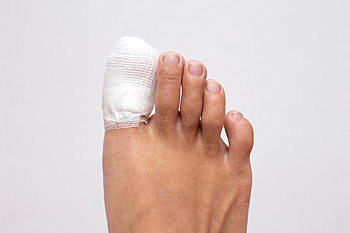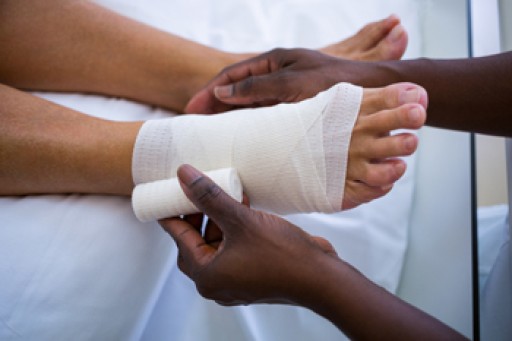
Morton’s neuroma is when a benign tumor grows in the nerve cells in the forefoot, causing pain or irritation. It impacts the nerve under the toe bones, usually between the third and fourth toes. Morton's neuroma can originate from irritation, trauma, or excessive pressure on the nerves in the forefoot. Wearing ill-fitting shoes that are too tight in the toe area and compress the forefoot and toes is one such cause. Wearing high-heeled shoes that increase pressure on the forefoot, causing the toes to be jammed into the toe box, is another. Repetitive force on the forefoot from exercises like running, and court or racket sports is yet another cause of this affliction. When one has a Morton’s neuroma, they will often experience burning, shooting, or stabbing pain in the ball of the foot. It will feel like a pebble is under the foot, and there will be numbness, tingling, or discomfort in the toes. If you feel you might have a Morton’s neuroma, see a podiatrist who will examine your foot and if needed, order imaging tests to confirm the diagnosis before recommending treatment that is right for you.
Morton’s neuroma is a very uncomfortable condition to live with. If you think you have Morton’s neuroma, contact one of our podiatrists of Lewis Wolstein, DPM, P.C. & Associates. Our doctors will attend to all of your foot care needs and answer any of your related questions.
Morton’s Neuroma
Morton's neuroma is a painful foot condition that commonly affects the areas between the second and third or third and fourth toe, although other areas of the foot are also susceptible. Morton’s neuroma is caused by an inflamed nerve in the foot that is being squeezed and aggravated by surrounding bones.
What Increases the Chances of Having Morton’s Neuroma?
- Ill-fitting high heels or shoes that add pressure to the toe or foot
- Jogging, running or any sport that involves constant impact to the foot
- Flat feet, bunions, and any other foot deformities
Morton’s neuroma is a very treatable condition. Orthotics and shoe inserts can often be used to alleviate the pain on the forefront of the feet. In more severe cases, corticosteroids can also be prescribed. In order to figure out the best treatment for your neuroma, it’s recommended to seek the care of a podiatrist who can diagnose your condition and provide different treatment options.
If you have any questions, please feel free to contact our office located in Co-Op City, NY . We offer the newest diagnostic and treatment technologies for all your foot care needs.











